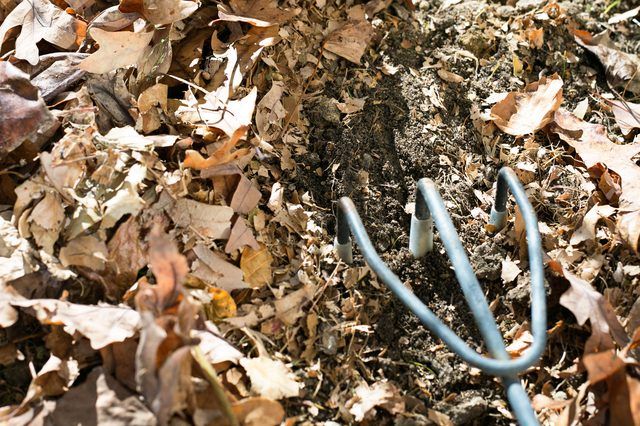Bulbs
Flower Basics
Flower Beds & Specialty Gardens
Flower Garden
Garden Furniture
Garden Gnomes
Garden Seeds
Garden Sheds
Garden Statues
Garden Tools & Supplies
Gardening Basics
Green & Organic
Groundcovers & Vines
Growing Annuals
Growing Basil
Growing Beans
Growing Berries
Growing Blueberries
Growing Cactus
Growing Corn
Growing Cotton
Growing Edibles
Growing Flowers
Growing Garlic
Growing Grapes
Growing Grass
Growing Herbs
Growing Jasmine
Growing Mint
Growing Mushrooms
Orchids
Growing Peanuts
Growing Perennials
Growing Plants
Growing Rosemary
Growing Roses
Growing Strawberries
Growing Sunflowers
Growing Thyme
Growing Tomatoes
Growing Tulips
Growing Vegetables
Herb Basics
Herb Garden
Indoor Growing
Landscaping Basics
Landscaping Patios
Landscaping Plants
Landscaping Shrubs
Landscaping Trees
Landscaping Walks & Pathways
Lawn Basics
Lawn Maintenance
Lawn Mowers
Lawn Ornaments
Lawn Planting
Lawn Tools
Outdoor Growing
Overall Landscape Planning
Pests, Weeds & Problems
Plant Basics
Rock Garden
Rose Garden
Shrubs
Soil
Specialty Gardens
Trees
Vegetable Garden
Yard Maintenance
How to Prepare Asparagus Plants for the Winter
How to Prepare Asparagus Plants for the Winter. Asparagus is a perfect crop for the home gardener. It is a perennial, which means your asparagus bed will provide you with spring treats for many years to come, with almost no effort. While others are paying premium prices for this gourmet vegetable, you will be harvesting your own every day for six...
Asparagus is a perfect crop for the home gardener. It is a perennial, which means your asparagus bed will provide you with spring treats for many years to come, with almost no effort. While others are paying premium prices for this gourmet vegetable, you will be harvesting your own every day for six to eight weeks. Blanch and freeze the leftovers and you can enjoy these spears throughout the year.
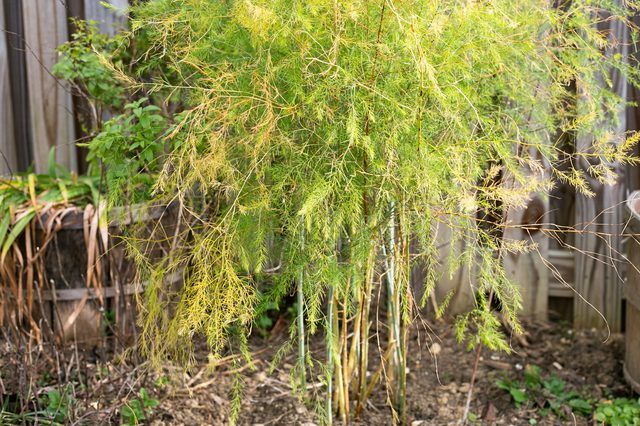
Things You'll Need
Pruning shears
Newspapers
Straw
Step 1
Start planning for winter the previous spring. Harvest your asparagus as usual, but make sure you leave two or three spears growing throughout the harvest season. Those spears will sprout ferns that will help to harvest sunlight, which will extend your asparagus season. This, in turn, will strengthen your bed and make it more resistant to winter cold.
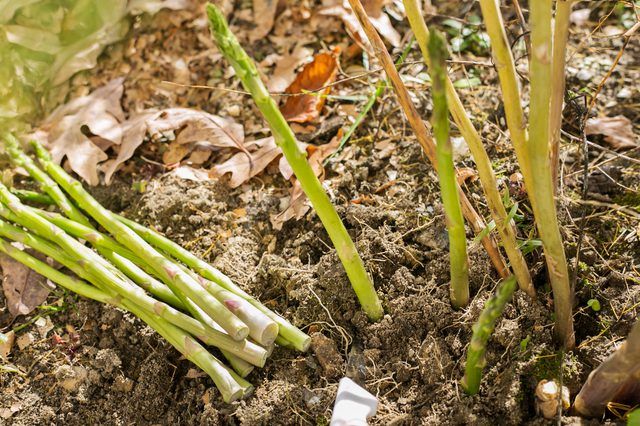
Step 2
Stop harvesting when your spears get to pencil-thin size. Leave those spears to grow ferns that capture sunlight and feed your bed after your harvest. They will furnish energy to the bed to strengthen your plants for the coming winter.
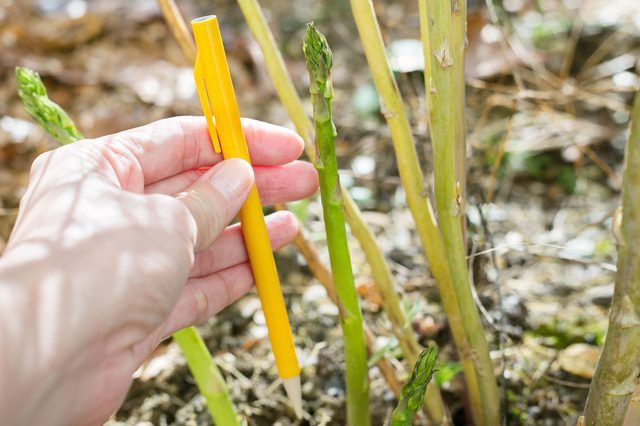
Step 3
Cut your dried ferns to the ground after the first frost, if you are in an area that doesn't get a lot of snow, and has bare ground for most of the winter. Make sure the plants are brown and dry. This prevents asparagus beetles from moving in and spending the winter. It also tells your asparagus plants that it is time to be dormant, so that they can rest until spring production time. If the ground freezes in your area, protect your bed with layers of newspaper, covered with a thick layer of straw or other airy mulch.
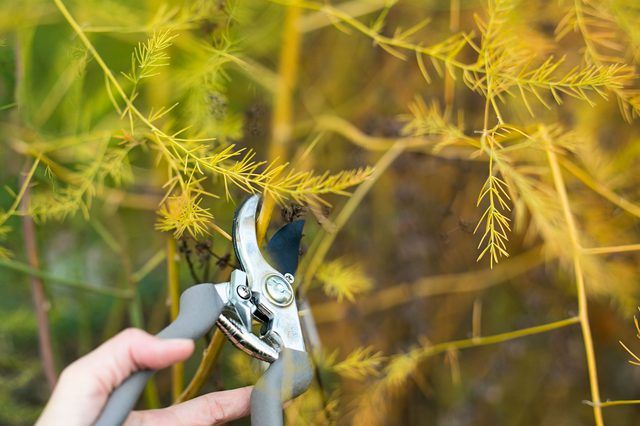
Step 4
Leave the ferns in place if you are in an area that has snow on the ground for most of the winter. Those ferns will collect and hold snow, which will form an insulating blanket over your bed. Supplement this with layers of newspaper over your bed, covered with a thick layer of straw or other airy mulch. Allow snow to build up and stay on the bed. This provides even more protection.
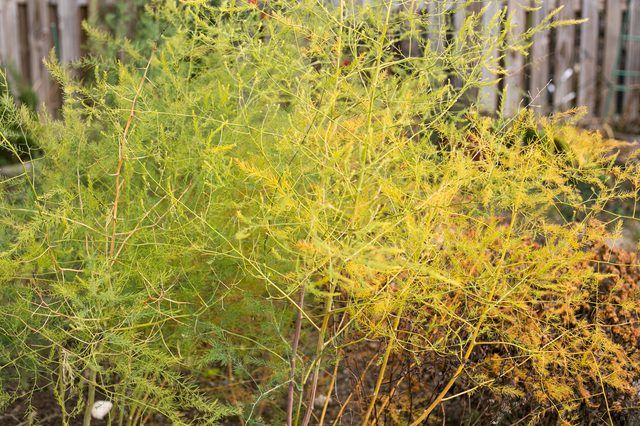
Step 5
Clean up that bed when the warm weather of early spring starts. Add those bedding materials to your compost pile. Make sure you wait until the last hard frost has passed. Now, proceed again from Step 1.
